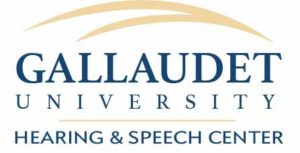Aural Rehabilitation | Communication Therapy
Auditory Training
Individuals who have cochlear implants, other amplification, or those who are simply interested in improving listening skills for a variety of reasons (general communication, family, work, school, safety in the environment) can address their needs and interests with auditory training.
- Post cochlear implant training — developing listening skills through the cochlear implant
- Listening skills for hearing aid/assistive device users
- Telephone training

Speech language pathologist evaluating pediatric client

Speech language pathologist prompts client during therapy
Speechreading/Lipreading
Individuals interested in supporting their overall communication skills by improving their ability to process more communication information visually via lipreading/speechreading have the opportunity to address that in communication therapy.
- Analytic training visemes — recognizing groups of sounds categorized by mouth shape
- Synthetic training — understanding meaningful speech through speechreading
Communication Strategies Training
A tremendous aid to communication is the ability to use the strategies available to you when you are communicating. Understanding and using communication strategies will assist in planning for a communication challenge ahead of time. Maintaining strong communication and knowing how to repair communication breakdowns appropriately when they occur are covered in this training. Also, an essential element of this training is knowing how to adjust an environment to promote productive and successful communication.
- Anticipatory strategies — ways to plan for more effective communication during personal encounters
- Maintenance and repair strategies — methods of keeping conversation going and recognizing / repairing communication breakdowns when they occur
- Environmental strategies — tools for evaluating and modifying the effect of the environment on communication

Audiologist demonstrates assisted listening devices with client

Expressive Communication
Training to improve how to produce or say specific sounds, as well as how to use the rules of English to "pronounce" words. For example, in the word "phone", 'ph' is produced as 'f'; the 'e' at the end of the word is silent. This training also improves the use of the voice as it relates to ensuring other people understand the communication.
- Articulation - production of speech sounds
- Pronunciation/dictionary skills — knowledge of English rules and dictionary symbols to produce words
- Voice/intelligibility - includes pitch, loudness, nasality, breath support, etc.
Language
Training to Increase the use and understanding of English idioms, figurative language and general vocabulary terms. Language work also includes improving written language, such as sentence structure and the use of appropriate words/vocabulary.
- English idioms
- Vocabulary
- Writing for communication

